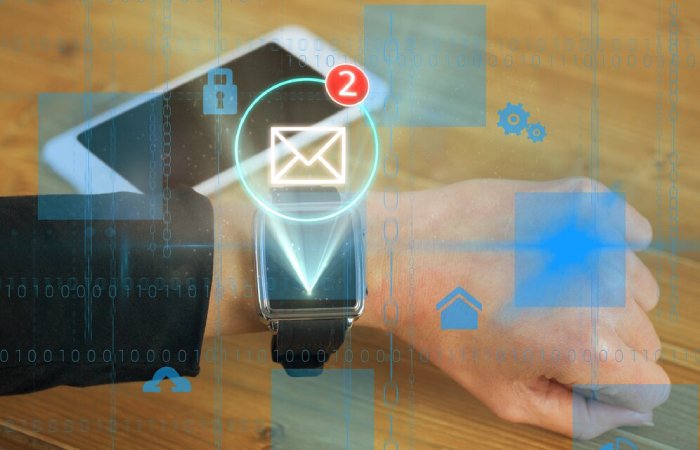- Conduct Deliverability Tests: Utilize platforms such as MailGenius, GlockApps, or SendForensics to pinpoint aspects of your emails that can be enhanced and boost their effectiveness.
- Monitor Feedback Loops: Enroll in feedback systems with leading Internet Service Providers to receive alerts when your emails are marked as spam by recipients. This data enables you to quickly tackle and fix any problems.
- Analyze DMARC Reports: Consistently analyze DMARC reports to spot any authentication issues and adjust your policies as needed.
Best Practices For SMTP Server Mail To Avoid
Spam Filters
Spam Filters
It is vital for effective communication that your emails reach the inboxes of recipients instead of being redirected to spam folders. This is particularly important for marketing initiatives, transactional messages, or everyday business communication. To successfully navigate past spam filters, it's crucial to optimize your SMTP server settings. In this article, we will discuss key strategies for improving email deliverability, enhancing your sender reputation, and ensuring that your messages consistently arrive in inboxes.
1. Implement Email Authentication Protocols
Establishing effective email authentication methods is essential for protecting SMTP mail and preventing it from being flagged as spam.
SPF (Sender Policy Framework)
SPF is used to confirm that the IP address of the sender is permitted to send emails for your domain. Ensure that your SPF records are set up correctly by listing all legitimate sending sources and routinely updating the record to account for any modifications in your email setup.
DKIM (DomainKeys Identified Mail)
DKIM incorporates a digital signature into your emails, verifying their authenticity and integrity. It's important to set up DKIM using a valid key pair and to confirm that the signature matches the DNS records of your domain.
DMARC (Domain-based Message Authentication, Reporting & Conformance)
DMARC policies are designed to oversee the outcomes of email authentication and provide guidelines for receiving servers on managing messages that fail authentication. When configured with a "p=reject" policy and thoroughly tested, DMARC can greatly diminish the amount of spam.

2. Maintain a Positive Sender Reputation
Internet Service Providers and spam detection systems keep a careful eye on the reputation of your domain. Maintaining a good sender reputation is essential for guaranteeing that your emails arrive in the desired inboxes.
Monitor IP Reputation
Consistently check your IP reputation through platforms such as SenderScore or Google Postmaster Tools. Take immediate action if you notice any indicators of being blacklisted or a diminished reputation.
Avoid Spam Trigger Words
Terms such as "Free," "Urgent," and "Act Now" are often linked to spam messages. It's best to use a more conversational tone and steer clear of overusing punctuation, capitalization, or pushy sales strategies.
Maintain a Clean Mailing List
Eliminate inactive or incorrect email addresses from your list to prevent elevated bounce rates. Utilize double opt-in procedures to confirm that your recipients truly wish to receive your communications.
3. Optimize Email Content
Developing high-quality email content can improve the chances of avoiding spam filters while also boosting user interaction.
Ensure Proper HTML Formatting
Disorganized HTML can trigger spam filters. Therefore, it's crucial to use straightforward and tidy code, avoiding the use of embedded scripts and excessively large images.
Balance Text and Images
Emails that rely predominantly on images and lack adequate text may be marked as spam. To enhance the chances of successful delivery, aim for a good balance between textual content and visuals.
Include Plain Text Versions
Always include a plain text format of your email in addition to the HTML version. This enhances the chances of successful delivery and guarantees that it works well with different email clients. Click the link to find out more.

4. Configure SMTP Server Settings Correctly
Properly setting up your SMTP server parameters guarantees smooth interaction with the servers of the recipients.
Use Secure Connections
Consistently employ SSL or TLS protocols to secure your emails. This safeguards against interception while in transit and fosters confidence with the servers that receive them.
Set Up Reverse DNS
Make sure that your IP address is associated with your domain through a legitimate PTR record. This confirmation process is essential in preventing your emails from being classified as spam.
Implement Throttling
Manage the quantity of emails dispatched over a period to prevent burdening recipient servers. Implementing throttling can lower bounce rates and enhance overall email deliverability.
5. Test and Monitor Regularly
Regularly testing and overseeing your email campaigns allows you to detect problems early on, preventing any negative effects on deliverability.